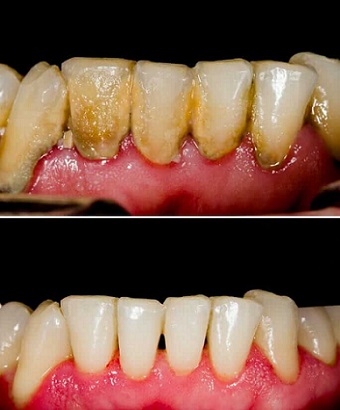


New tech like lasers and AI is transforming periodontal disease treatment—making care faster, less invasive, and more effective.
[Bayonet Point, Florida] — As awareness grows around oral health and its connection to systemic wellness, periodontal disease has emerged from the background as a serious public health issue. While often overshadowed by tooth decay and cavities, this condition—commonly known as gum disease—affects nearly half of adults over the age of 30 in the United States, according to recent data from the CDC.
But in 2025, researchers and clinicians alike are asking a key question: how is the treatment of periodontal disease evolving, and what does it mean for the millions affected by it?
Periodontal disease begins subtly, with symptoms like gum inflammation, redness, and occasional bleeding. In its early form—gingivitis—it may go unnoticed or be dismissed as a minor issue. However, if left untreated, it can escalate to periodontitis, leading to gum recession, tooth loss, and even bone damage. But the implications extend beyond the mouth.
“Studies continue to link gum disease with chronic conditions such as cardiovascular disease, diabetes, respiratory illnesses, and even Alzheimer’s disease,” says Dr. Karen Li, a periodontist and researcher at the National Oral Health Institute. “We’re realizing it’s not just about teeth—it’s about total-body health.”
For decades, the primary methods of treating periodontal disease included deep cleaning procedures like scaling and root planing, antibiotics, and in severe cases, surgery. While effective, these methods could be invasive and uncomfortable, often requiring long recovery periods and multiple follow-up visits.
Today, however, a growing number of dental professionals are embracing less invasive, high-tech approaches aimed at improving outcomes while reducing discomfort. Among these, laser-based therapies, antimicrobial photodynamic treatments, and guided tissue regeneration techniques are gaining traction.
“Patients are demanding alternatives that are effective, but also less traumatic,” notes Dr. Samuel Ortega, a dental technology consultant based in San Diego. “Laser-Assisted Periodontal Disease Teatment is becoming increasingly common, and it’s showing promising results in terms of patient satisfaction and long-term healing.”
Laser treatment for periodontal disease uses focused beams of light to remove diseased tissue and kill bacteria without harming healthy gum tissue. This technique minimizes bleeding, reduces the need for anesthesia, and often shortens healing times.
“The precision of laser tools means less damage and inflammation in surrounding tissues,” explains Dr. Ortega. “We can target only the infected pockets, making treatment more comfortable and effective.”
Furthermore, this approach can stimulate the regeneration of connective tissues and bone around the teeth, which is particularly valuable in moderate to advanced stages of periodontitis.
Artificial intelligence (AI) is also making its way into periodontal care. New diagnostic tools can assess gum health using digital imaging, machine learning, and predictive algorithms to forecast disease progression and suggest customized treatment plans.
“AI-powered periodontal charts allow dentists to detect subtle changes in gum and bone health over time,” says Dr. Li. “This helps us intervene earlier and track progress more objectively.”
Moreover, digital records enhance communication between general dentists and specialists, ensuring a more coordinated approach to treatment and prevention.
Despite these technological advancements, experts agree that prevention remains the cornerstone of managing periodontal disease. Routine dental visits, proper brushing and flossing, and early detection are still the most effective tools in preventing its onset or progression.
“Technology helps us treat periodontal disease more efficiently, but we must not lose sight of the basics,” says Dr. Jamal Henderson, a dental public health advocate. “We need more widespread education campaigns about the signs of gum disease and how lifestyle factors—like smoking, diet, and stress—contribute to its development.”
In some areas, mobile clinics and tele-dentistry platforms are being used to reach under-served populations, providing access to screenings and periodontal disease treatment in communities that have traditionally lacked adequate dental care.
Perhaps one of the most exciting areas of research is the systemic impact of periodontal health. Chronic inflammation from gum disease is thought to be a contributing factor in the development or worsening of several non-oral diseases.
For example, inflammatory molecules released by infected gums can enter the bloodstream, potentially exacerbating atherosclerosis or raising blood sugar levels in people with diabetes.
“Medical-dental integration is crucial moving forward,” says Dr. Li. “We’re seeing more physicians ask their patients about their gum health, and more dentists taking patient blood pressure or discussing diabetes management. It’s a necessary shift.”
With more data linking oral health to systemic disease, calls for reform in healthcare policy are growing louder. Advocates argue that dental coverage should be more integrated with medical insurance, allowing easier access to preventive and periodontal care.
“Periodontal disease isn’t just a dental issue; it’s a healthcare issue,” emphasizes Dr. Henderson. “We need legislation that supports routine cleanings, advanced therapies, and maintenance programs under all standard insurance plans.”
Some states have already begun to pilot oral health integration programs under Medicaid, which may pave the way for broader changes nationwide.
As innovation continues to redefine how we approach periodontal disease treatment, the future looks more personalized, less invasive, and more interconnected with overall wellness.
Emerging therapies under investigation include microbiome rebalancing techniques, stem cell regenerative procedures, and targeted immunotherapy. These could potentially transform how gum disease is managed—from reactive care to proactive, precision-based interventions.
While not yet widely available, these developments point toward a paradigm shift that emphasizes early detection, patient comfort, and whole-body health.
The Florida Center for Laser Dentistry is among the dental practices adopting modern periodontal therapies, reflecting a broader industry movement toward more advanced, patient-friendly solutions.
